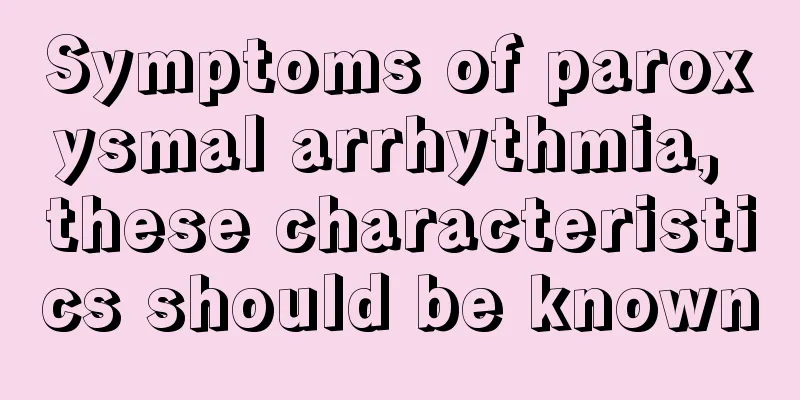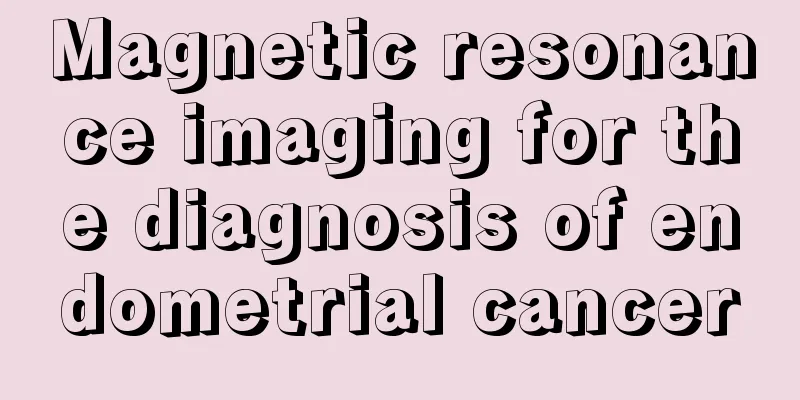Symptoms of paroxysmal arrhythmia, these characteristics should be known

|
A very common type of arrhythmia is paroxysmal arrhythmia. The typical symptoms exhibited by patients are palpitations, dizziness, sweating, and chest tightness. An electrocardiogram should be performed in time to confirm the diagnosis. In normal times, more attention should be paid to the scientific diet for arrhythmia to avoid the onset of the disease. 1. Paroxysmal supraventricular tachyarrhythmia (PSVT) is a common arrhythmia, which includes various types of tachycardia and causes a series of clinical manifestations due to the sudden and rapid acceleration of the patient's heartbeat. Patients with paroxysmal supraventricular arrhythmias often experience palpitations, sweating, dizziness, vertigo, chest tightness, chest pain and difficulty breathing during an attack, and fewer patients may experience syncope. 2. Paroxysmal supraventricular arrhythmias include many types. Patients with irregular heart rhythm mostly suffer from premature contractions, atrial fibrillation, and multifocal atrial tachycardia; while paroxysmal supraventricular tachycardia is characterized by absolutely regular heart rhythm, repeated attacks of arrhythmia, and sudden onset and cessation of arrhythmia. Stimulation of the vagus nerve can terminate reentrant tachycardias involving the sinoatrial node, such as atrioventricular reentrant tachycardia and atrioventricular nodal reentrant tachycardia. 3. The definitive diagnosis of paroxysmal supraventricular arrhythmia mainly relies on electrocardiogram examination. Generally, the type of arrhythmia of the patient can be diagnosed by recording a normal twelve-lead electrocardiogram. Through careful analysis of the electrocardiogram, an experienced cardiologist can also determine the approximate location of impulse reentry in the patient's heart and make a rough judgment on the location for future radiofrequency ablation surgery. 4. Patients with infrequent paroxysmal supraventricular arrhythmias can use dynamic electrocardiogram or event recorder to capture abnormal heart rhythm. Invasive electrophysiological examination is generally used to diagnose and treat patients with a history of paroxysmal regular palpitations. |
<<: How are nasolabial folds formed
>>: What should I do if I am allergic to river shrimps?
Recommend
For patients with gallbladder cancer, it is important to do a good job of nursing them
In recent years, the incidence of gallbladder can...
What are the symptoms of lung cancer? Lung cancer will show these symptoms
Expert introduction: The symptoms of lung cancer ...
Symptoms after discontinuation of hormone mask
In their daily lives, many people will choose som...
How to clean oil stains on clothes
It is very difficult to clean clothes, but there ...
What are the folk remedies for treating ichthyosis
To treat ichthyosis, some diet and conditioning m...
Will nasopharyngeal carcinoma relapse after targeted therapy?
Will nasopharyngeal carcinoma relapse after targe...
How do middle school students tie their hair to look good
Middle school students are often the spokesperson...
What is the best way to treat warts
Warts, do you know what this common disease is? Y...
The fastest way to treat acne
Adolescence is the happiest stage of a person'...
What is the reason for a tumor in the abdomen
If you do not pay attention to your eating and li...
How to whip the butter so it won't melt
Many people like to bake, but when baking, they u...
The Baidian madness has been passed down to the next generation
Vitiligo is a common disease around us, mainly be...
What medicine is good for jaundice in adults
Many people say that jaundice is a disease, but i...
The harm of squatting for a long time to defecate
With the popularity of mobile phones and the deve...
What to do if you have many dreams when sleeping
People spend half of their lives sleeping. Sleepi...









